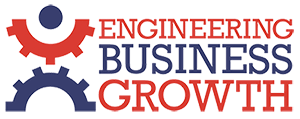 As a small business leader it is easy to be so busy “doing” that you get stuck in your own bubble and are not be aware of your external environment and how it impacts on your business. However the demands on you are entirely dependent on the context you operate in and this includes the external context in which your business operates.
As a small business leader it is easy to be so busy “doing” that you get stuck in your own bubble and are not be aware of your external environment and how it impacts on your business. However the demands on you are entirely dependent on the context you operate in and this includes the external context in which your business operates.
You are hopefully used to asking yourself questions like “what are my business goals for the next year?” “What is my long-term vision and how are my current priorities helping me achieve that?” Maybe you ask yourself “what sort of a phase are we in right now?” (growth, transition, skill shift, introducing innovation, consolidation?)
But, what about questions like “what are the economic conditions that are impacting on my industry sector and markets and how does that impact on my business?”
Having a good understanding of the context your business is operating in as well as your goals for the future will help you plan to meet the ever-changing environment. For instance If you’re involved in share trading you may be considering a hold on recruitment currently given the uncertainty in global markets. If you’re in the property sector, you might be considering how are government initiatives going to effect the current lack of supply in the housing market and what opportunities or threats does this present dependent on your role within that sector.
To make sure you’re responding to external factors involves analysis of the macro environment of your business through monitoring, forecasting and assessment, and considering the political, economic, social and technological events, issues and trends which influence your business, your industry and the market.
If you don’t consider these and the expectations of the relevant interest groups you can find that your business is suddenly facing unexpected challenges, that your market is shifting and demand for what you produce is weakening, or that you have missed opportunities for growth.
For example, issues are often forerunners of trend breaks. A trend break could be a value shift in society, a technological innovation  that might be a permanent change that if missed could make your business redundant or equally if spotted could be an opportunity for you to “catch that wave” and ride your business to greater success. Or issues can be a less deep-seated temporary short-lived reaction to a social shift that, if spotted in time, can boost the business or if not, represent a missed opportunity.
that might be a permanent change that if missed could make your business redundant or equally if spotted could be an opportunity for you to “catch that wave” and ride your business to greater success. Or issues can be a less deep-seated temporary short-lived reaction to a social shift that, if spotted in time, can boost the business or if not, represent a missed opportunity.
This has impacted businesses small and large down the years. Look at HMV. They thought they were in the business of selling entertainment in physical forms – CDS and DVDs. They carried on plowing resources into the high street, failing to spot the shift in the marketplace to online digital entertainment and failing to challenge more innovative competitors infringing on their space like iTunes, Spotify and Netflix.
One tool use to help analyse these external factors is called the PESTEL analysis. This breaks down the environment into 6 factors:
• Political; taxation policy, trade regulations, government stability, unemployment policy etc
• Economical – Interest/inflation rates, growth in spending power, rate of people in pensionable a ge, recession or boom, customer liquidations, balances of sharing
• Socio-cultural – Values, beliefs, language, religion, education, literacy, time orientation, lifestyle
• Technological – Internet, E-Commerce, Social Media, electronic media, research & development, rate of technological change
• Environmental – Competitive advantage, waste disposal, energy consumption, pollution monitoring
• Legal – Health & safety, product safety, advertising regulations, product labelling, labour laws
External factors indirectly affect a business and although they are out of your control, it is up to you whether you do your research and analysis, and think strategically about your business direction, to ensure you maximise on the opportunities that these factors can create for your business, or if you don’t, risk losing out to your competition.
For example, by understanding your specific sector challenges it gives you a better chance of finding solutions through strategic planning to transfer challenges into opportunities for growth. Like businesses in the retail sector, where there is a rapidly evolving new economy and they are experiencing increased competition with online retailers, yet this presents an opportunity for those innovative enough to embrace it.
 When you are caught up in the “doing” it can seem like you don’t have the time to think about these things but if you don’t you could pay the price. Take a bit of time to go through the PESTEL for your business and you will be taking a step from being “reactive” to “proactive” and will make sound business decisions as a result.
When you are caught up in the “doing” it can seem like you don’t have the time to think about these things but if you don’t you could pay the price. Take a bit of time to go through the PESTEL for your business and you will be taking a step from being “reactive” to “proactive” and will make sound business decisions as a result.

